 |
E-Mail Etiquette: E-Mail Basics |
1.00 |
E-commerce has become one of the most effective ways of doing business. Most companies conduct some of their communications online, so it is important for their employees to write effective electronic mail, or e-mail, messages. E-mail is the exchange of text messages by using computers. To send e-mail messages, users need to type in the address of the person to whom they want to send the message, write the message, and click "Send." |
 |
E-Mail Etiquette: E-Mail Effectiveness |
0.50 |
In this unit, you will learn the importance of considering the recipient before writing an e-mail; the factors to be considered before writing a message, such as your relationship with the recipient, the subject, and the purpose of writing the message; and how to effectively compose messages, anticipating negative recipient reactions such as skepticism and apathy. Finally, you will learn about managing your e-mail, checking your e-mail, handling large volumes of e-mail, helping others manage their e-mail volume, and setting the e-mail program to respond automatically. |
 |
E-Mail Etiquette: E-Mail Features and Security |
0.50 |
In this unit, you will learn about the features of e-mail programs. You will learn about the importance of attachments and identified the guidelines for attaching files to e-mail messages. You will also learn to prioritize messages by labeling them. This course will cover how to create signature files. You will also learn some important features of e-mail include folders, filters, address book, and the print feature. You will also learn that e-mail messages can be tracked, searched, and downloaded. Finally, you will learn about securing your messages, encrypting messages, and using digital signatures. You will also learn the importance of creating effective passwords to prevent others from reading or altering your e-mail. |
 |
E-Mail Etiquette: E-Mail Messages |
0.50 |
In this course, you will learn how to take advantage of the headers in e-mail messages. You will learn about the “To” field, in which you should type the recipient’s e-mail address. You will also learn when to send carbon copies and blind carbon copies of messages. You will learn the importance of writing a proper subject field for e-mail messages and that the header also includes the date and time of sending messages. Finally, you will learn how to construct the body of an e-mail message, add a personal touch to your messages by including a proper greeting, relay information by placing it in the appropriate order, and use different types of lists effectively. You learned the correct way to write long e-mail messages to keep recipients interested in the information and how to effectively close e-mail messages. |
 |
E-Mail Etiquette: E-Mail Policies |
0.75 |
There is an unprecedented amount of documented information available today. An offensive or improper e-mail sent to one person can be copied and sent to many users. It’s important that employees familiarize themselves with and follow their organization’s e-mail policy because employers can be held liable for employee e-mail use. |
 |
E-Mail Etiquette: Netiquette Guidelines |
0.50 |
E-mail, a relatively new way of communicating, has changed the culture of communication. Online communication has its own rules regarding acceptable and unacceptable behavior. Netiquette refers to the set of rules you should follow when communicating online. |
 |
Effective Communication with Children and Youth |
2.00 |
We are constantly communicating with the children and youth in our program through our words and actions. It's important for program staff to think critically about their communication skills and habits in order to communicate effectively. During this course, participants will learn about effective and dynamic communication tools, strategies to check for understanding, and activities that engage children and youth in communication. |
 |
Effective Health and Safety Committees |
1.00 |
This course covers hazards that are associated with your workplace and the best methods to control them. It also covers the basic legal requirements for employers to maintain adequate health and safety in the workplace. Finally, this course offers suggestions for starting a health and safety committee at your workplace to advocate for employee health concerns. |
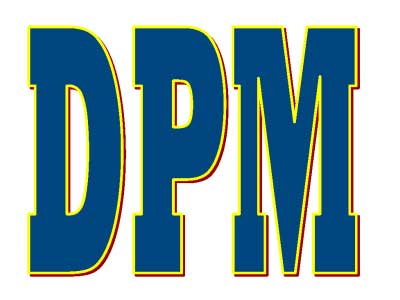 |
Effective Prehospital Patient Handoffs Between Providers |
0.50 |
Effective Prehospital Patient Handoffs Between Providers was designed to provide a common process for reporting patient information during the prehospital care process. Communication of the patient's prehospital care from all level of providers is essential in ensuring the continuation of care in a unified and effective manner and to help provide a seamless transition in their care. This course expands on the idea of effective patient handoffs to the field providers that often transfer patients between various levels of care from first-responder through advanced paramedics. Very often, initial observations of those initial responders are unavailable to subsequent responders - either because the patient has been moved, or the scene itself has been altered. Without an effective process to communicate these details, important information can and will be lost. |
 |
Effective Presentations: Audience Analysis and Supporting Material |
0.50 |
This course will cover how to analyze the audience and identify the benefits of audience analysis. You will also learn how to determine the supporting material and the types of supporting material. |
 |
Effective Presentations: Audience Analysis and Supporting Material (Instructor Guide) |
0.84 |
Audience analysis is the process of determining the audience’s needs, so you can give an appropriate presentation. You should determine the reason people will attend your presentation; it might be a requirement, or they might be interested in the topic. It is also helpful to determine your audience's attitudes, interests, and level of knowledge.
This Instructor's Edition of this course includes notes and suggestions to assist you in presenting the material, whether in an in-person classroom setting, or as an instructor-led online or distance-learning course. It also provides you with the answers to questions found in mid-lesson activities, as well as in the quiz that concludes the course. |
 |
Effective Presentations: Building Presentations |
0.50 |
This course will cover how to build a presentation, develop an introduction and capture the attention of the audience, and organize the body of the presentation and use transitions. You will also learn how to conclude the presentation. |
 |
Effective Presentations: Building Presentations (Instructor Guide) |
1.17 |
Organization is extremely important in a presentation because the audience cannot follow your work if they become confused. Therefore, it is the responsibility of the presenter to help the audience understand the presentation from beginning to end.
This Instructor's Edition of this course includes notes and suggestions to assist you in presenting the material, whether in an in-person classroom setting, or as an instructor-led online or distance-learning course. It also provides you with the answers to questions found in mid-lesson activities, as well as in the quiz that concludes the course. |
 |
Effective Presentations: Fundamentals of Persuasion |
1.00 |
This course will focus on persuasion and the goals of persuasion. You will also learn how to organize a persuasive presentation and use the methods of persuasion. |
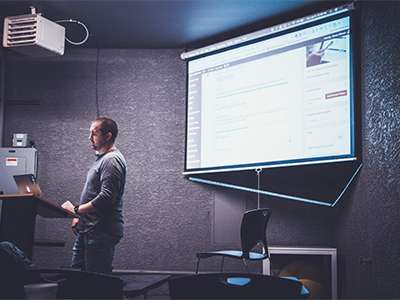 |
Effective Presentations: Fundamentals of Persuasion (Instructor Guide) |
1.17 |
Although all presentations are persuasive to some extent, a true persuasive presentation attempts to influence the way audience members think about something or influence the way they behave.
This Instructor's Edition of this course includes notes and suggestions to assist you in presenting the material, whether in an in-person classroom setting, or as an instructor-led online or distance-learning course. It also provides you with the answers to questions found in mid-lesson activities, as well as in the quiz that concludes the course. |
 |
Effective Presentations: Fundamentals of Presentation |
0.75 |
This course will cover how to identify and use effective presentations. You will also learn how to plan a presentation and determine primary and secondary objectives. |
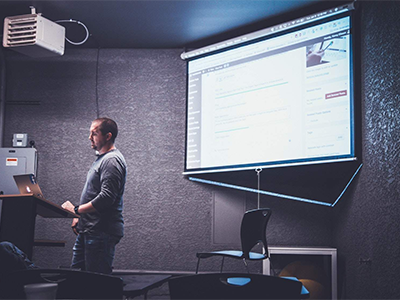 |
Effective Presentations: Fundamentals of Presentation (Instructor Guide) |
0.67 |
Effective presentations provide the opportunity to communicate important, specific information in a succinct manner that is beneficial to the audience members. To create this benefit, the information or processes described in the presentation must be presented in a manner that allows the audience to understand and use them.
Effective presentations are comprised of several elements, including support materials, presentation skills, and relevant content. It is important that all irrelevant content is eliminated from the presentation, so the listener is not overloaded with data.
This Instructor's Edition of this course includes notes and suggestions to assist you in presenting the material, whether in an in-person classroom setting, or as an instructor-led online or distance-learning course. It also provides you with the answers to questions found in mid-lesson activities, as well as in the quiz that concludes the course. |
 |
Effective Presentations: Presentation Mechanics |
0.50 |
This course will cover how to incorporate visual aids and understand the types of visual aids. You will also learn how to display and create visual aids. |
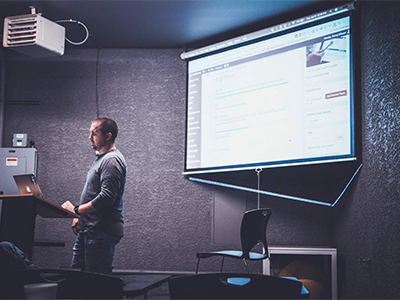 |
Effective Presentations: Presentation Mechanics (Instructor Guide) |
1.00 |
For the success of your presentation, you should consider the environment. Always try to view the facility sometime during the early stages of your preparation process, because the facility itself can affect your preparation, as well as the delivery of it.
This Instructor's Edition of this course includes notes and suggestions to assist you in presenting the material, whether in an in-person classroom setting, or as an instructor-led online or distance-learning course. It also provides you with the answers to questions found in mid-lesson activities, as well as in the quiz that concludes the course. |
 |
Effective Presentations: Presentation Process |
1.00 |
This course will cover how to use a presentation process, prepare before making the presentation and overcome the fear of speaking, and deliver a presentation by using different aspects of voice. You will also learn how to use nonverbal communication aids. |
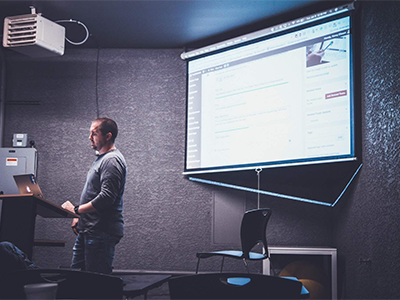 |
Effective Presentations: Presentation Process (Instructor Guide) |
1.34 |
For a presenter to communicate a message to the audience successfully, you have to do more than simply transfer information. Instead, you need to create meaning for the audience, which is done by preparing and delivering your presentation in a manner that focuses on the audience. It is important to remember that the presentation can accomplish your objectives only if it is meaningful to the audience.
This Instructor's Edition of this course includes notes and suggestions to assist you in presenting the material, whether in an in-person classroom setting, or as an instructor-led online or distance-learning course. It also provides you with the answers to questions found in mid-lesson activities, as well as in the quiz that concludes the course. |
 |
Effective Presentations: Question-and-Answer Session |
0.50 |
This course will cover how to prepare to answer questions and conduct a question-and-answer session. You will also learn how to handle challenging questions and audiences. |
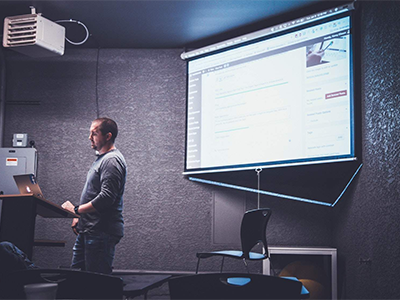 |
Effective Presentations: Question-and-Answer Session (Instructor Guide) |
0.67 |
Because audience members usually ask questions that reflect their own situation and experiences, you’ll have the opportunity to apply your topic directly to their lives, which will improve your audience’s understanding and retention of the information you present.
This Instructor's Edition of this course includes notes and suggestions to assist you in presenting the material, whether in an in-person classroom setting, or as an instructor-led online or distance-learning course. It also provides you with the answers to questions found in mid-lesson activities, as well as in the quiz that concludes the course. |
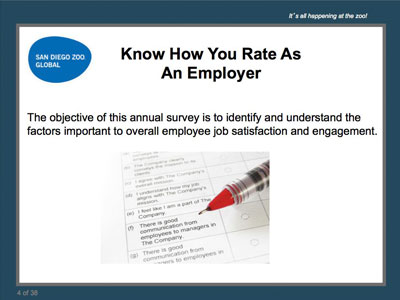 |
Effectively Managing an Employee Engagement and Satisfaction Survey |
1.00 |
There is much scientific evidence that clearly shows a direct correlation between employee engagement/satisfaction and organizational performance. Engaged employees are more productive, profitable and customer service oriented. Engaged employees drive company innovation and have increased tenure. Learn how to conduct a World Famous Employee Satisfaction Survey, and incorporate the right questions to ask to also measure Employee Engagement - which will definitely benefit your organization by showing employees that you have a genuine interest in their feedback. |
 |
Egress, Fire Prevention, & Fire Protection |
0.65 |
In this course, participants will learn about escape routes and exits, emergency action plans, fire prevention plans, fires, fire extinguishers, and workplace fire prevention tips. |


























